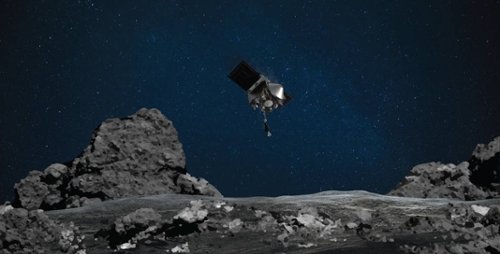Geology chair, member of two active space missions, sees great potential in historic SpaceX launch
Geology chair, member of two active space missions, sees great potential in historic SpaceX launch

When Dr. Harold C. Connolly Jr. viewed the historic SpaceX rocket launch May 30, he did so with greater focus than most of the millions watching around the world, and it brought tears to his eyes.
Connolly, founding chair and professor of Rowan University’s Department of Geology in the School of Earth & Environment, is a co-investigator and Mission Sample Scientist on NASA’s asteroid sample return mission, OSIRIS-REx. He is also co-investigator with the Japanese space agency JAXA’s asteroid sample return mission, Hayabusa2, and a founding member of the Hayabusa2/OSIRIS-REx integration team.
As such, Connolly will lead scientific analysis of the sample OSIRIS-REx brings to Earth in 2023 from the asteroid Bennu and he’ll be deeply involved analyzing the payload Hayabusa2 brings back later this year after its rendezvous with the asteroid Ryugu.
Yet despite his involvement with two active space missions, quests that could help unlock mysteries of earth’s formation and the origins of life itself, watching the SpaceX launch – the first private endeavor to carry American astronauts to the International Space Station – Connolly found himself virtually transported back to childhood, to the novelty and excitement of the early Apollo missions.
Unlike those manned missions, the SpaceX Falcon 9 rocket is partly reusable; its early stage returned to Earth and was recovered.
“Returning the main booster rocket to the launchpad was not only cost efficient but savvy and super cool,” Connolly said. “This is what the space program was supposed to look like.”
Connolly said the mission, and the historic public-private partnership between NASA and SpaceX, was significant, both for the cost effectiveness of a reusable rocket (SpaceX estimates a Falcon 9 launch costs more than $60 million) and because the launch was the first in nearly a decade to return Americans to space from U.S. soil since the end of the space shuttle program.
“When that thing was launching I had tears of joy in the middle of an incredibly hard time for us,” he said.
Connolly said he and other longtime participants in, and observers of, the space program marveled not only at the partly reusable rocket but at the sleek space suits worn for the journey by astronauts Bob Behnken and Doug Hurley.
Like many products created for space travel that have made their way to consumer markets, like memory foam, freeze-dried food, emergency "space blankets" and “DustBusters,” the material in those suits may one day make it to or inspire others for Earth-bound users.
“That’s a key part,” Connolly said. “What people don’t realize is space missions create jobs.”
Still, he said, the most important facets of space travel are the missions themselves and the knowledge derived from them.
He and colleagues from both the NASA and JAXA missions are already widely publishing their findings including the latest, “Collisional formation of top-shaped asteroids and implications for the origins of Ryugu and Bennu,” which ran May 27 in the journal Nature Communications.
Connolly said limitless classroom lessons also develop from such missions and they’re spawning new generations of aspiring space travelers.
He noted that with all of the heartbreak humankind experienced so far in 2020, the SpaceX/NASA collaboration was a singular bright spot.
“Between COVID 19 and the slaying of George Floyd and its aftermath, the SpaceX launch was the first real major good news Americans have had in months,” he said. “It puts us back on the pathway of exploration of space. I firmly believe that this commercial venture will continue to push forward and that’s really important for the whole human race.”